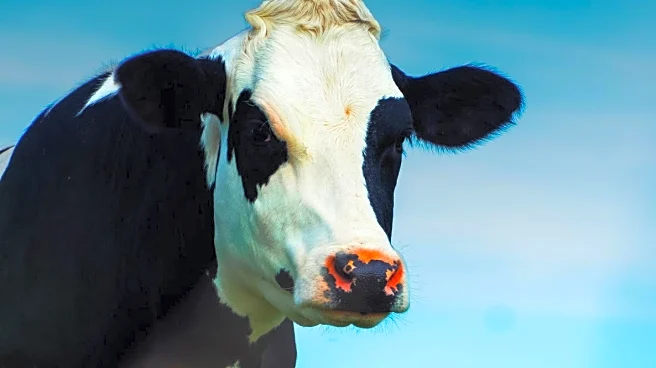What's Happening?
A recent genomic study has provided significant insights into the Lumpy Skin Disease Virus (LSDV) affecting cattle in Bangladesh. The research, published in Nature.com, utilized Next-Generation Sequencing
to analyze the genome-wide structure of the LSDV isolate from recent outbreaks. The study found a high degree of genetic conservation, with 99.9% concordance with existing strains, but also identified several point mutations and structural variations contributing to the strain's local variability. These findings are crucial for developing targeted control measures, including therapeutic interventions and vaccine formulations tailored to the strains circulating in Bangladesh. LSDV, part of the Capripoxvirus genus, poses a significant threat to agricultural productivity, causing fever, nodular skin lesions, and economic losses due to decreased milk and meat production.
Why It's Important?
The study's findings are pivotal for the agricultural sector in Bangladesh, as they offer a pathway to more effective control measures against LSDV. By understanding the virus's genetic architecture, researchers can develop vaccines and treatments that are specifically tailored to combat the strains prevalent in the region. This could lead to a reduction in the economic losses faced by farmers due to decreased livestock productivity. Moreover, the insights into the virus's functional diversity and regulatory elements could enhance global understanding of LSDV's evolutionary dynamics, potentially aiding in the management of outbreaks in other regions as well.
What's Next?
The research suggests that the identified genetic features could be used to develop highly specific control measures against LSDV. This includes the formulation of vaccines and therapeutic interventions that are tailored to the unique strains found in Bangladesh. As the study contributes to the global understanding of LSDV, it may also influence future research and policy decisions regarding the management of the disease in other affected regions. Stakeholders in the agricultural sector, including policymakers and farmers, may need to collaborate on implementing these findings to mitigate the impact of LSDV.
Beyond the Headlines
The study highlights the importance of repetitive DNA sequences, previously considered 'junk' DNA, in the virus's genome. These sequences play a regulatory role in gene transcription and genome organization, enabling the virus to adapt swiftly to host environments. Understanding these mechanisms could lead to broader applications in virology and genetic research, potentially influencing how scientists approach the study of other viral pathogens.











